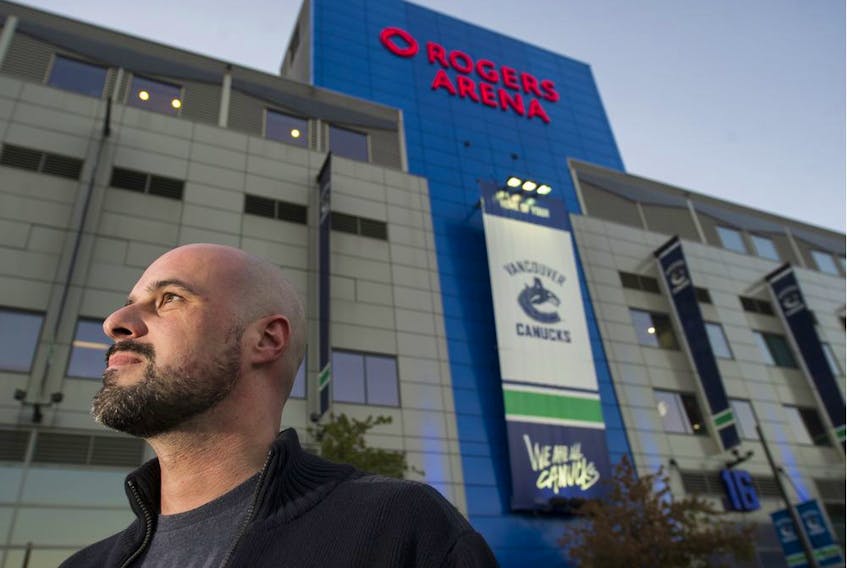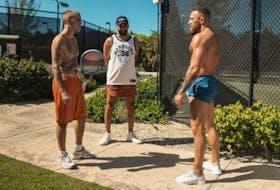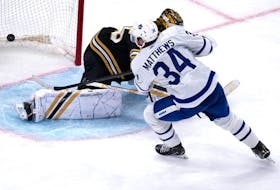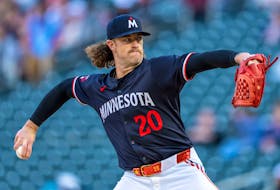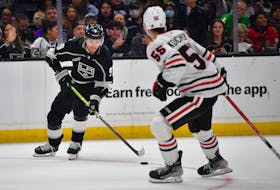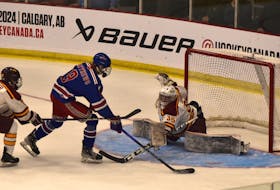With the Vancouver Canucks in a desperate late chase to make the playoffs, Trevor Linden scored twice — his first two-goal effort in five years — helping lead the NHL club to a 6-2 win on home ice.
That was March 30, 2008 and Stephanie Smith was there. The noise in the rink now known as Rogers Arena was deafening. She can still hear it.
She was also in the rink in 2001 — then known as GM Place — for the World Figure Skating Championships, for the final group in the pairs competition. She saw Jamie Sale and partner David Pelletier win it all.
Sale had been struggling to land a jump in the months before the event, but she nailed it on that night and, yes, the roar was deafening.
“It was the loudest I’d ever heard that room,” Smith recalled. “And I was there for all the games in the 2011 Stanley Cup Final.
“That kind of collective secular gathering place, where people come together and bond over incredible feats of athletics or cultural experiences … I’m glad we have that place.”
And, yet, she also admitted, she probably shouldn’t be a fan of the arena.
A longtime resident and activist in Vancouver’s Downtown Eastside, Smith argued fiercely against the Whitecaps’ plans to build a stadium north of Gastown because it would have driven her neighbourhood in a different direction.
But Rogers Arena has proven to be a little different, even if it also represents what she calls “exploitative capitalism.”
She isn’t happy how workers at the arena or the ownership’s other businesses have been treated over the years. She gave up her season tickets when 1,000 culinary workers were fired when the Canucks terminated Aramark as its concession vendor.
Some bars that were once frequented by Vancouver’s gay and lesbian community — such as the former Lotus Hotel — disappeared from the area, but that was less about fans wearing Canucks jerseys and more about the reshaping of Yaletown and Gastown into what it is today.
And there are many Canucks fans who have never set foot in Rogers Arena because of the price of tickets.
Her ideal scenario would be for the arena and team to both be publicly owned.
And yet, Smith also acknowledges people weren’t displaced from their homes when the arena was built. No public funds have ever been used to prop up either the team or arena.
The arena was constructed on polluted land vacated first by Canadian Pacific and then by Expo 86.
When then-team owner Arthur Griffiths approached the city in the early 1990s about building a new downtown arena in a tight space between the Dunsmuir and Georgia viaducts using only his money, city council didn’t take long to say yes.
“A no-brainer,” former Vancouver city councillor Gordon Price said. “All we had to do was give them some parking exemptions and a variance on the sign bylaw. It wasn’t giving away the store. Win, win, win, I very much thought.”
“We made them money,” Griffiths chuckled over the phone about Price’s parking comment. The Griffiths family owned or partly-owned the Canucks from 1974 to 1997.
The Canucks actually did more than build the arena — they also built the pedestrian walkways and staircases that carry fans from the top of the escarpment that the viaducts launch off of to the upper gates of the arena and then down to the lower street levels.
Griffiths said he also had an eye on being a good neighbour. He engaged with residents of the Downtown Eastside and Strathcona.
Along with the help of the NDP government, they were able to establish a hiring scheme that sought out workers from the local community.
One of those programs, the Bladerunners , still exists today.
“We had to be creative in creating programs,” he said in highlighting the enduring legacy of the Bladerunners.
Today part of Work BC, the program “provides life skills, job readiness skills, work experience/on-the-job training, job coaching and ongoing supports to unemployed youth at risk,” according to its website.
Griffiths said he also designed the site with an eye towards the future: they loaded the site to allow for a 20-storey tower to one day be constructed.
The Aquilinis in recent years have built two towers, and there’s still a possibility for one or two more towers to be built adjacent to the arena , likely once the viaducts are removed over the next decade.
The construction of the current towers added hundreds of rental units, something the city is in desperate need of more of.
After first considering a plan to renovate the Pacific Coliseum, it became clear to Griffiths that with the NHL moving into a bigger revenue world, the team needed its own building. In 1992, he announced the team would move downtown.
(Three other locations had also been considered, one over the rail yards north of Gastown — the same spot the Whitecaps would consider 15 years later — another just east of Main Street next to Pacific Central station, and a third essentially in the parking lot known as Larwill Park, which is across from the Beatty Street armoury.)
Rogers Arena has proven to be a revenue machine and it was all about location then and now.
Griffiths said he looked at the success of Madison Square Garden in New York City, situated at one of the busiest transit hubs in the world, and the lack of success of the Capital Centre, the suburban home of the Washington Capitals, and knew which model to follow.
A large portion of the team’s ticket holders worked downtown and getting closer to them was going to be essential, Griffiths said. And proximity to transit would also help.
They were right, Price said.
“It really did prove that you don’t need parking. You’ve got a SkyTrain line on your front door. And people will walk a little further than you expect,” he said.
“A stadium is not what I would call a local neighbourhood amenity,” Price said. “It brings in a lot of people and noise. But it didn’t have the negative effects — cars — I think some people thought it would.”
The success of the arena itself is more than just 40-50 hockey nights per year. The Grizzlies for a time doubled the number of sports nights of course, but there are still 55 to 60 non-NHL events at the arena every year.
In other words, about two nights per week the arena is attracting people to the area. Those people may have ended up in the area even if there wasn’t an arena, but the rink is doing good business.
And that’s a good thing, Tom Mayenknecht believes.
The Vancouver sports business guru was once a vice-president of communications for Orca Bay, the firm that eventually bought out Griffiths and later sold the team to the Aquilini family, the current owners of the Canucks.
“The arena sets the tone,” Mayenknecht said. “That part of Vancouver as we know it today doesn’t happen without Arthur Griffiths’ vision.”
CLICK HERE to report a typo.
Is there more to this story? We’d like to hear from you about this or any other stories you think we should know about. Email [email protected]
Copyright Postmedia Network Inc., 2020

